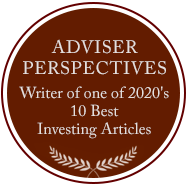
Categories
Resource Links
 GIR's Investing in the New Europe
GIR's Investing in the New EuropeBloomberg Press, 2001, "Sound, practical advice."
Wall Street Journal Europe
Flying High, Cautiously
Barron’s Hedge Funds – A Monthly Report
NEARLY A DECADE AGO, WHEN HE HEARD THE Details of the airplane accident that took John F. Kennedy Jr.’s life, hedge-fund manager David Gerstenhaber had an immediate sense of what might have gone wrong.
“There are many ways to regain control of an aircraft once you feel the least bit disoriented,” he says, before running through a checklist of steps that could have been taken, involving an immediate shift to instrument readings over visual reckoning. His comments are more than mere speculation. Gerstenhaber is a certified twin engine aircraft pilot, and he knows how to handle risk, in the air or on Wall Street. That has helped him turn in market-thumping results.
Last year, his Argonaut Aggressive Global Partnership
fund, which uses a global macro strategy, gained 12.3% while the Standard & Poor’s 500 fell 37% and the Credit Suisse/Tremont Global Macro Index slid 4.6%.
That was hardly an outlying performance. The New York-based fund has never had a down year since it was started in the summer of 2000. Through 2008, its three-year average annualized return was 11.7%. During the same span, the S&P was down more than 8% a year, and the global macro index was up 8.3%. Since inception, the fund has soared 18.4% annually, versus a broad market decline of 3.8% and a 12.7% gain by the average global macro fund.
Global macro funds search for investment trends in stocks, bonds, commodities, interest rates and currencies, then bet on them in markets around the world. Says the 48-year-old Gerstenhaber: “We study macroeconomic data, central-bank policies, and government and market data that’s main-economic database.” But unlike some other global macro-fund managers, he also drills down into individual market behavior, searching for value that isn’t fully reflected in market prices.
This is a big factor driving the fund’s outperformance, according to Gerstenhaber, a Yale graduate who received a Ph.D. in economics from Cambridge University on a Fulbright scholarship.
“If we don’t have a strong conviction about interest rates or the trend of the S&P 500, we will then look at the performance of the oil or aluminum markets to find a more compelling investment,” he says. And he has no problem bulking up in cash if his team of 10 researchers can’t come up with enough strong ideas. Currently, the fund has about half of its $460 million in assets committed to 50 positions.
Gerstenhaber attributes part of his consistent performance to first-hand analysis. “Even the best data is always dated,” he explains, “but what you see on the ground is [in] real time.”
He learned the value of such observation when he was working in Tokyo. “In 1987, there was much talk of the soaring Japanese yen, pending deflation and slowing industrial growth,” he recalls. But one evening when his regular squash game was canceled, he went out for a run and saw a remarkable number of flatbed trucks transporting huge I-beams to dozens of construction sites around the city. This led Gerstenhaber to look deeper into economic conditions, and to adopt a more bullish short term outlook than other economists. As it turned out, Japan’s economy didn’t slow down for another two years.
Now married with four kids, Gerstenhaber doesn’t travel as much as he did. But his staff stays on the road–each employee globe-trotting 25% of the time.
The fund, which is open
only to investors who meet certain financial requirements, including the ability to invest at least $2 million, has shone particularly brightly during the past year.
In fact, its outperformance was more likely attributable to money not lost, rather than to money earned. Jarrett Posner, Argonaut’s chief operating officer and risk-oversight manager, says “there will be plenty of times when we will make a wrong bet or get into a position too early, but we protect ourselves through aggressive risk management.”
This includes setting stops across nearly all positions, closely monitoring them and altering them when necessary. Investments are largely limited to liquid positions to ensure efficient pricing and the ability to exit immediately. To avoid excessive risk, the fund tries to determine how investments would behave under various scenarios–including the most adverse. And it generally prefers to hit lots of singles and doubles, rather than home runs.
Gerstenhaber also systematically takes money off the board as targets are hit and constantly reevaluates targets to avoid being hurt by unrealistic expectations.
When things aren’t going well, the fund seeks to limit daily losses to no more than 2.5%. If losses mount in any calendar month to 7%, positions are sold or completely hedged to prevent further damage.
“This not only prevents losses from spiraling,” explains Gerstenhaber, “but creates an automatic ‘time out’ that forces us to reevaluate all positions.” At the start of the next month, after the team figures out what drove the losses, some positions are reinstated, while others are replaced.
Another line of defense is the fund’s risk committee. Any member can call an immediate meeting if he fears a position is at excessive risk. The procedure got the fund out of commodities last June, right before they peaked.
Winning positions over the past year included a bet that U.K. interest rates would fall. That investment peaked in size late last summer at nearly 35% of the fund’s net asset value. (The use of derivatives actually limited the total of assets at risk to just 3.6%.) “We saw Britain going through a severe slowdown,” recalls Gerstenhaber, “and thought it was virtually impossible for the country to sustain its high interest rates.” By year end, the Bank of England had slashed rates by 350 basis points, or 3.5 percentage points. And it recently cut them another 50 basis points.
Also, with investors leaving emerging markets, and with their economies’ current account deficits climbing, Gerstenhaber saw their currencies, and especially the South African rand, coming under increasing pressure. He established a 5% short position in that currency in the third quarter. After trading at about 8 to the dollar in July, the rand closed the year at 9.5.
On the losing side,
Argonaut took a slight hit with its December 2007 investment in a basket of Mideast stock markets. With soaring petrodollars and a concerted effort by many local governments to diversify their economies into real estate and consumer-growth industries, Gerstenhaber saw the region benefiting from very strong long-term trends. He built up a position that peaked at 12% of the fund’s net assets. But early in 2008, when the equity slowdown started spreading globally, he began to sell. And when soaring oil prices suddenly reversed course at midyear, the fund closed out its exposure, limiting its loss.
By September, with the global economy sliding deeper into recession, demand falling, and speculators fleeing commodity contracts, Gerstenhaber shorted crude at $87 a barrel, wagering 5% of the fund’s assets on that position. He sold later in the fall when oil slid to his target price of $58. Oil tumbled further. But when it rallied to the high $40s in late December, he re-established a short position. Crude is now in the low $40s.
ERIC UHLFELDER, author of Investing in the New Europe, covers the markets from New York.
Tags: Argonaut, Balestra Capital, Barnegat Fund, Closed-end funds, Commodity Trading Advisors, Finisterre, Global macro, Hedge funds, mutual funds, Partners, Risk management, Xerion Fund
This entry was posted on Thursday, October 1st, 2009 at 5:25 pm and is filed under FUNDS. You can follow any responses to this entry through the RSS 2.0 feed. You can leave a response, or trackback from your own site.
Leave a Reply
Search
Opalesque Interview of Eric Uhlfelder





